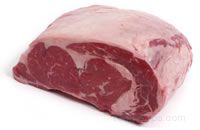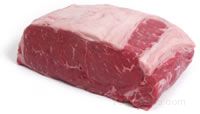 |
Roast Beef Cook Time - Cooking Tips | |||||||||||||||||||||||||||||||||||||||||||||||||||||||||||||||||||||||||||||||||||||||||||||||||||||||||||||||||||||||||||||||||||||||||||||||||||||||||||||||||||||||||||||||||||||||||||||||||||||||
| view article online: https://www.recipetips.com/kitchen-tips/t--1542/roast-beef-cook-time.asp | |||||||||||||||||||||||||||||||||||||||||||||||||||||||||||||||||||||||||||||||||||||||||||||||||||||||||||||||||||||||||||||||||||||||||||||||||||||||||||||||||||||||||||||||||||||||||||||||||||||||
Roast beef has always been a favorite dinnertime entrée. A flavorful roast beef is not difficult to cook, but there are a few important considerations to remember to ensure a good result. The following four points should be considered when you want to cook a delicious beef roast.
The oven temperature used to cook a beef roast is usually set somewhere between 300 degrees and 450 degrees Fahrenheit. The recommended cooking temperature for your roast is usually determined by the type of beef cut that you plan to roast. Some beef roasts are best when slow roasted at lower temperatures, while other roasts are best when cooked quickly with high heat. There are even a few beef roasts, especially some of the tougher roasts from the round or chuck, that are best when cooked with high heat at the start (to sear the outside of the meat and seal in the juices) and then cooked at a lower temperature to finish the roast. The cook time and temperature are not only determined by the type of beef roast but also by such considerations as the amount of marbling within the beef roast, the amount of outer fat covering the roast, and whether or not the roast is boneless. And, because there are a number of considerations that determine the proper cook time and temperature, a cooking times chart should be used only as a guideline and not as an absolute. The best method for determining the desired doneness of a beef roast is with the use of a reliable meat thermometer.
Remember, use the roast cook times in this chart as a guide only. The oven temperatures and roast cook times listed here are accurate enough to provide you with good results; however, it is important to keep in mind that a number of variables can make a difference when using these guidelines to cook your roast. You must consider the differences in ovens, whether or not the roast is placed into the oven directly from the refrigerator, the use of an oven cooking bag, and even the altitude of where you live—all of these can change the cook times for a beef roast by a significant margin. Note: See the article, "Beef Cooking Times," for additional cook times and temperatures for a variety of other beef roasts, steaks, and ground products. | |||||||||||||||||||||||||||||||||||||||||||||||||||||||||||||||||||||||||||||||||||||||||||||||||||||||||||||||||||||||||||||||||||||||||||||||||||||||||||||||||||||||||||||||||||||||||||||||||||||||
| Copyright 1999-2025 - Tecstra Systems Corporation/RecipeTips.com - All Rights Reserved | |||||||||||||||||||||||||||||||||||||||||||||||||||||||||||||||||||||||||||||||||||||||||||||||||||||||||||||||||||||||||||||||||||||||||||||||||||||||||||||||||||||||||||||||||||||||||||||||||||||||


